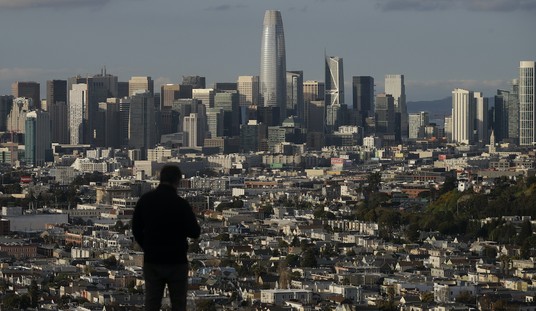There’s good news and bad news. The bad news is … bad.
Prime Minister Boris Johnson announces that the new COVID variant first seen in the UK may be more deadly. pic.twitter.com/y1yUChRxaS
— The Recount (@therecount) January 22, 2021
Patrick Vallance says there is very early, "uncertain" evidence that the new UK variant is slightly more deadly than the older variant.
Read more: https://t.co/Dit8UkNtBt pic.twitter.com/9gnJvnxb5d
— LBC (@LBC) January 22, 2021
The UK recorded 1,290 deaths of COVID yesterday. Per capita, that would be 6,500 Americans, a number we’ve yet to even approach. They’re seeing 50 percent more deaths per population than we are at the moment even though their daily case counts are comparable to ours.
The good news is what the curves look like lately both here and across the pond. Behold the trend in new cases in the U.S.:

New cases, hospitalizations, and deaths are all declining. “Weekly new cases for the seven-day period beginning Thursday, January 14 were down 20 percent, the lowest number of new cases we’ve seen for a non-holiday week since mid-November,” reports the COVID Tracking Project. “As important, after 16 straight weeks of increases, average weekly hospitalizations dropped 4 percent this week—a modest improvement, but a good sign.” Meanwhile, in the UK:

Looking at those graphs this morning, I thought, “It’s the vaccines, right?” As it happens, the UK and U.S. are easily the leaders among western powers in vaccinations per capita. Maybe immunizations are slowing transmission and we’re starting to see it show up in declining case counts.
But when you think further about that, it doesn’t wash. For one thing, Israel is far ahead of both countries in the percentage of its population that’s been vaccinated and yet it hasn’t seen any sharp decline in new daily cases yet. If there’s no herd immunity effect happening there yet, it’s surely not happening here. There’s also the small matter of the timetable: Full immunity takes five weeks to achieve even with the quickest-acting vaccine, Pfizer. Vaccinations have only been happening in the U.S. for around six weeks. As I write this, just 2.3 million Americans have received both doses, less than one percent of the population. Fifteen million have received at least one dose, which is less than five percent.
If there’s any herd immunity happening that’s driving down case counts, it’s got to be immunity acquired the hard way. Since the start of December, in less than 60 days, the United States has recorded more than 10 million new confirmed cases of COVID. The CDC estimates that the actual number of cases is some multiple of confirmed cases — let’s say five. If in fact 50 million people have had the virus in just the past seven weeks, that would mean something like 13-14 percent of the population has gained immunity recently. Add that to the 75 million or so estimated cases before December (15 million confirmed cases times five) and we really might have a third of the entire United States with immunity right now. Maybe the virus has started to run out of vectors of transmission.
Or maybe the current most common strain isn’t very efficient at transmitting. That could change quickly:
“We’re definitely on a downward slope, but I’m worried that the new variants will throw us a curveball in late February or March,” said Caitlin M. Rivers, an epidemiologist at the Johns Hopkins Bloomberg School of Public Health…
Some experts, looking abroad at how new viral variants sent cases surging in Britain, Ireland, South Africa and northern Brazil, said the United States could merely be in a lull before a new spike begins. Even after an epidemic’s peak, it remains dangerous: Sometimes just as many people are infected after the peak as were before.
“I think the next three months could be the worst part of the pandemic,” said Michael T. Osterholm, director of the Center for Infectious Disease Research and Policy at the University of Minnesota. “I hope I’m dead wrong.”
It’s possible that we’ve passed the summit of the epidemiological curve and will only see cases decline over the next three months as the weather warms and more people get vaccinated. It’s, uh, also possible that vaccinations will continue to proceed slowly and the remaining two-thirds of the population that’s vulnerable to the disease will get eaten alive as the British variant overwhelms the country a month from now.
The correct and simple explanation for why cases are falling in the U.S. and UK, I think, is that we’re finally moving past a spike in infections created by the holidays. Many people who should have known better got together at Christmas and/or on New Year’s Eve and spread the ‘rona around. The graphs embedded above show the results, with infections peaking in both cases 10 days or so after New Year’s. By now, most people who got infected on the holidays will have either beaten the disease and recovered or died. That’s why cases are falling. The thing to watch is whether they keep falling or if they plateau at pre-Christmas levels.
Exit question: Now that access to the vaccine is drying up in certain highly populated areas, is it time to switch to prophylactic antibody treatments? They work, apparently. But how long before we run out of those too?








